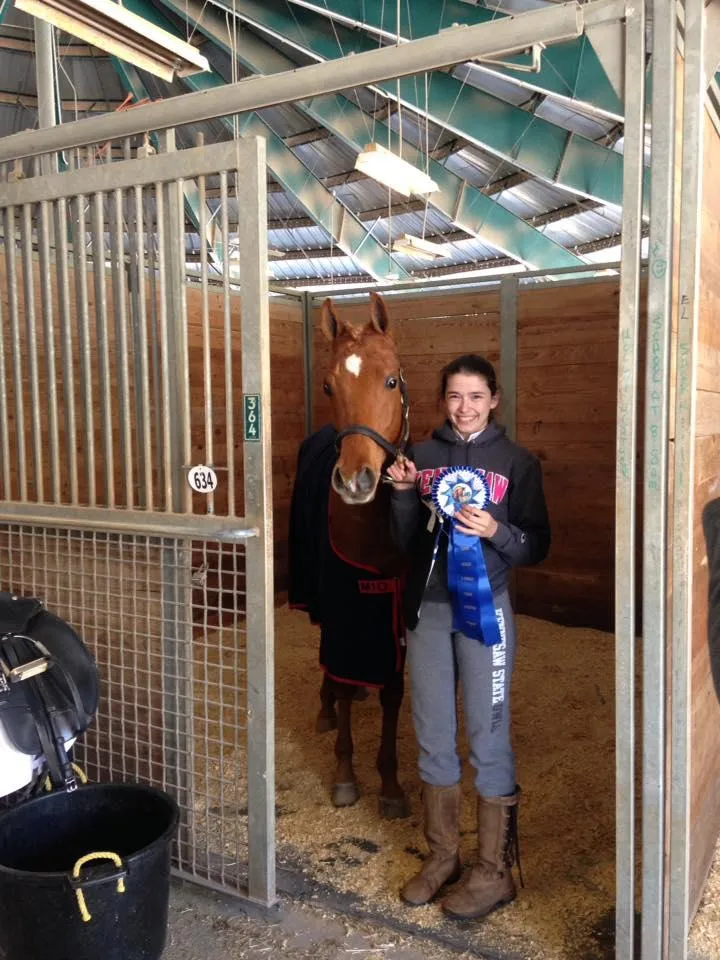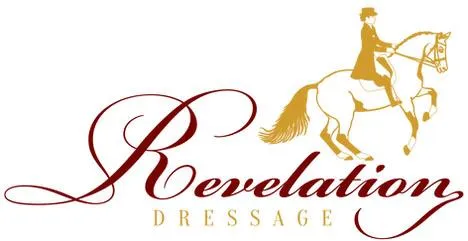Horseback Riding Lessons
Dressage | Western Dressage | Hunter Pleasure
Our Instructor Is A USDF Silver Medal Dressage Rider, USEF "r" Dressage Judge
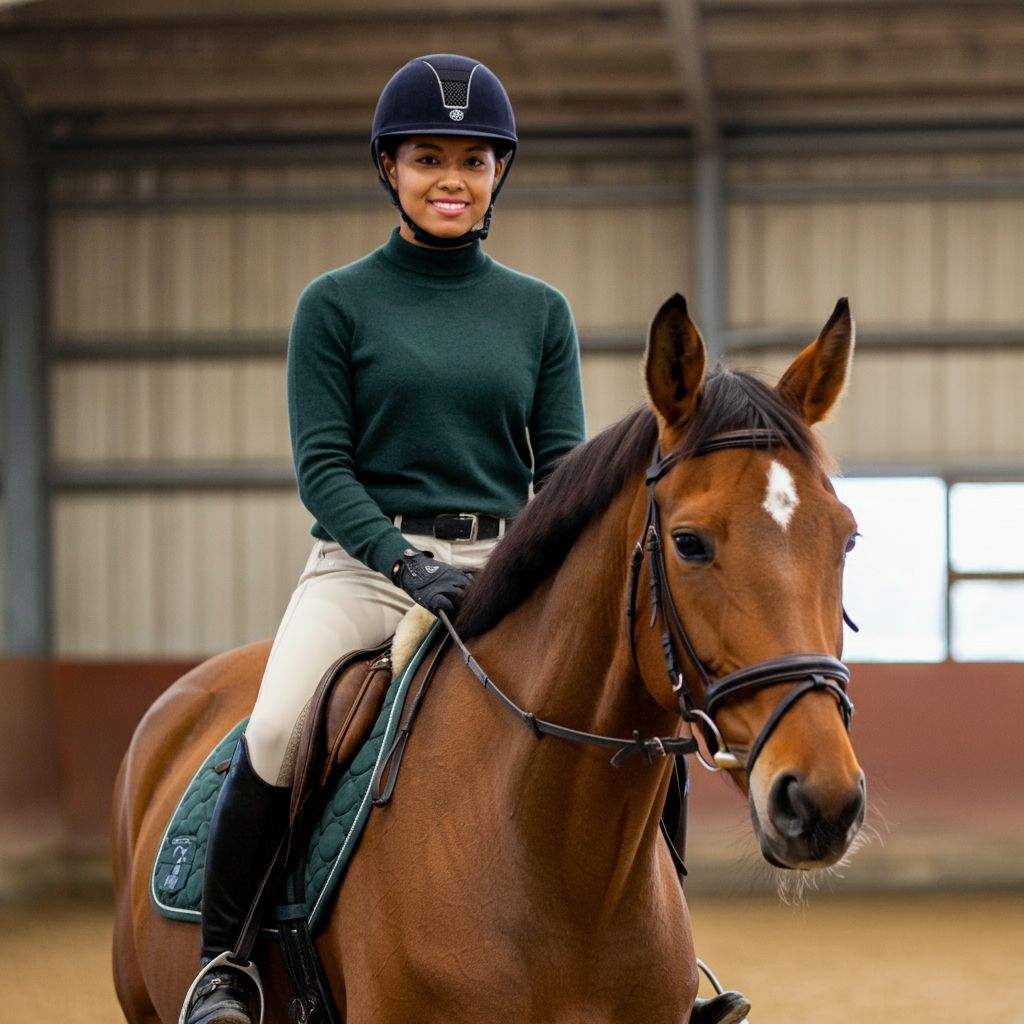
Horseback Riding Lessons for Adults and Kids Age 10+
From First-Time Riders to Aspiring Champions: Exceptional Training for Every Step of the Journey.
At Revelation Farm, we believe in the transformative power of horses, enhancing both our lives and personal growth. Our focus is on nurturing both you and our horses, with a commitment to creating a harmonious bond between horse and rider. Our trainer, Danielle Perry, is passionate about fostering this connection, using her expertise to enhance the "horse harmony" experience.
Danielle's approach is multifaceted, emphasizing skill enhancement and confidence building. She utilizes dressage, obstacles, and confidence courses to cater to individual rider needs, whether you're seeking the natural exhilaration of leisure riding or aiming for higher achievements in competitive arenas. Her teaching style is versatile, designed to meet the varying goals and aspirations of each rider, from improving show scores to earning USDF medals and freestyle bars.
Instruction at Revelation Farm is rooted in classical dressage, yet innovatively incorporates holistic elements of mind, body, and spirit. This blend, combined with motivation and goal-setting strategies, empowers riders to visualize and track their progress clearly.
Moreover, our online training curriculum extends this experience beyond the farm. It enables riders and their families to monitor advancements and motivates them to reach new heights in riding and equestrian knowledge.
Our ultimate aim at Revelation Farm is to ensure that every ride and lesson is enjoyable and fulfilling, revealing and nurturing the inner rider in everyone. Join us to embark on this rewarding journey, where every step brings you closer to realizing your equestrian dreams.
About Our Instructor, Danielle Perry
Not just another horseback riding instructor, Danielle Perry is a USDF Silver Medal dressage rider, and a USEF "r" dressage judge.
So, what does that mean to you? That means that Danielle is uniquely qualified to teach a wide range of students, from beginners to advanced competitors, and to provide highly informed, nuanced instruction that addresses both the technical and competitive aspects of dressage.
Specifically, it indicates:
Advanced Riding Skills: Earning a USDF Silver Medal requires achieving scores at or above specific thresholds at both Fourth Level and Prix St. Georges, which are advanced levels of dressage competition. This achievement demonstrates a high degree of skill, dedication, and understanding of dressage principles, indicating that the instructor is capable of riding and training horses at these higher levels.
Deep Understanding of Dressage Principles: The journey to obtaining a Silver Medal in dressage involves extensive training and competition experience, which deepens the rider's understanding of dressage principles, techniques, and the training scale. This comprehensive knowledge allows the instructor to teach a wide range of students, from beginners to those competing at higher levels.
Judging Experience: Being a USEF "r" dressage judge means the individual has passed rigorous education and testing requirements to judge dressage competitions. This role requires a deep understanding of dressage test criteria, the ability to evaluate horse and rider performance objectively, and a thorough knowledge of the rules and regulations of dressage competitions. An instructor with judging experience can provide valuable insights to students on how to perform better in competitions, understand judges' expectations, and improve their scores.
Save 20% on Your Intro Lesson with Danielle:
Just $60 (normally $75)
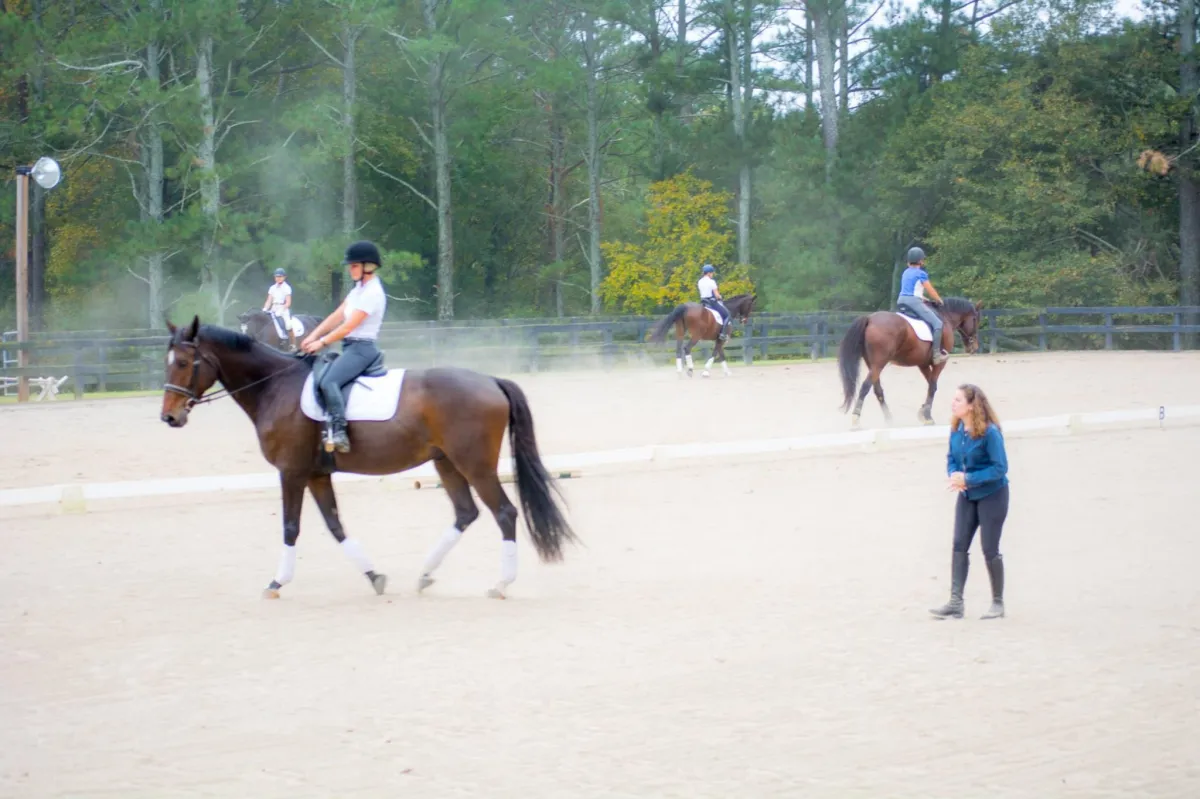
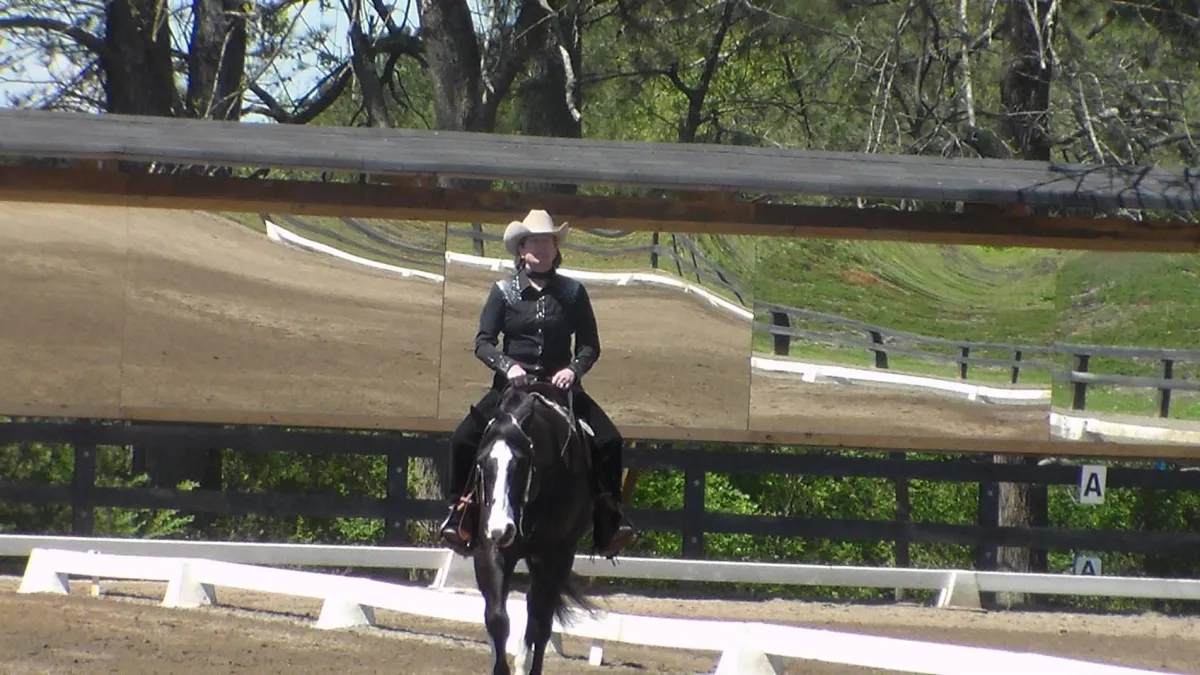
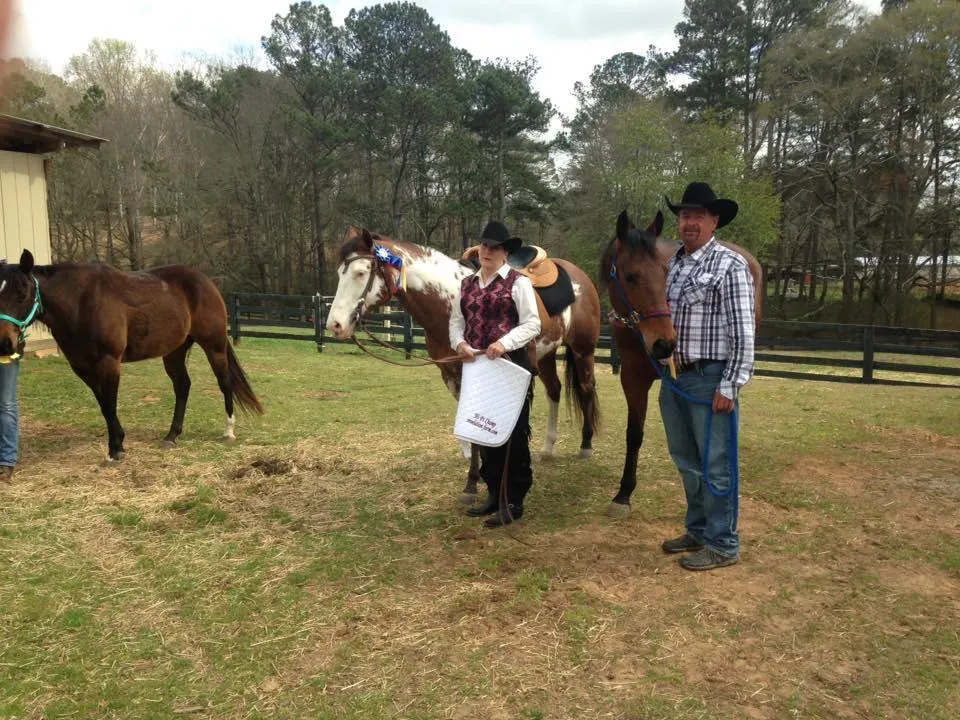
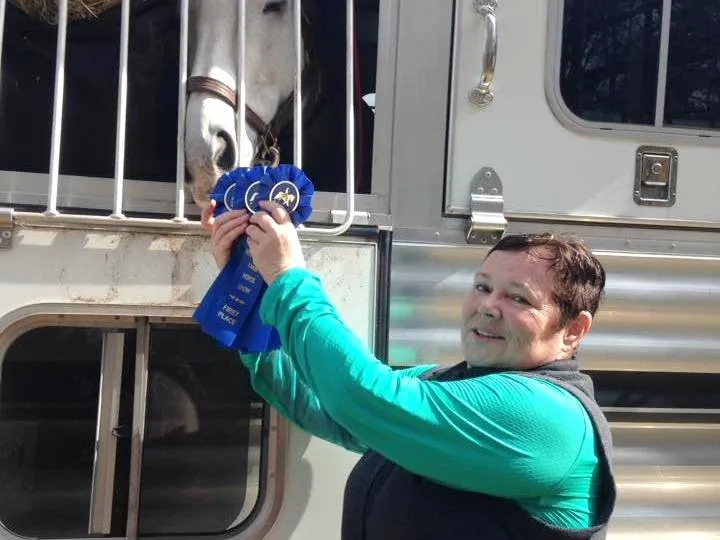
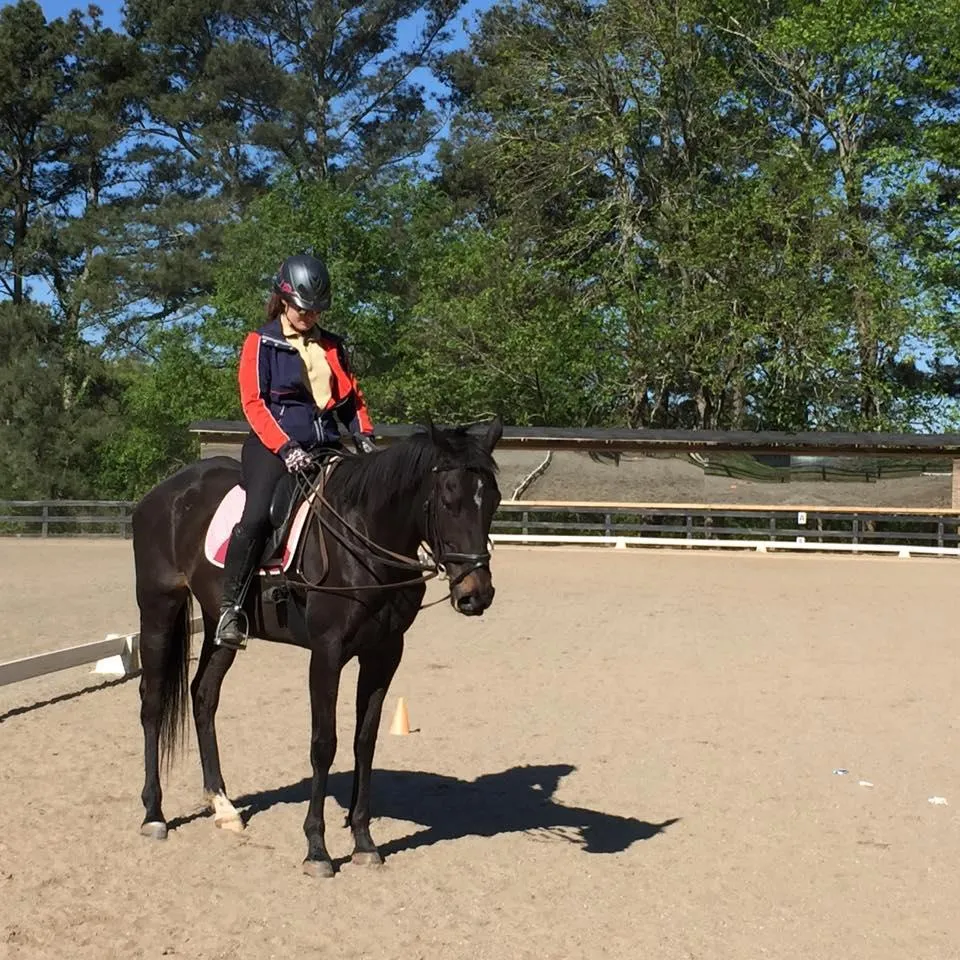

FAQs
General
How often should I take horseback riding lessons?
It is commonly recommended that you take a minimum of 1 riding lesson a week, and many riding schools require that you at least ride that often. However, the more often you ride, the faster you will progress. So, if your budget allows, ask your riding instructor about options for riding 2, 3 or even more times per week!
Can you learn to ride a horse at any age?
Short answer: Yes! Longer answer: It’s not age that matters most, it’s your level of fitness and willingness to learn. Schedule time to talk to a riding instructor before signing up for a riding lesson. She or he will be able to help assess your fitness and any riding experience you have, soothe your mind by answering any questions, and go over what you’ll need to bring and wear for your first lessons
Do I have to be in great shape to ride a horse?
You don't have to be in great shape at all! In fact, horseback riding is a wonderful way to get yourself into shape, and to have fun doing it! That said, there are some weight limits to consider. As a general rule, a horse can only carry a rider that is, at the max, 20% of its own weight. So, a horse that is, say, 800 lbs. can only carry a rider that is 160 lbs. A horse that is 1,000 lbs. can carry a rider of up to 200 lbs. The best thing to do is to talk with your riding instructor, or potential riding instructor, to see how big their horses are, then determine which ones you would be able to ride.
What is the best age for a child to learn horse riding?
Some riding schools offer lessons for toddlers. That said, note that most horse riding schools or camps usually cater to kids aged 6 and up. Here at our farm we take students 10 and up.
Riding Attire
What is proper attire for horseback riding?
When you are just starting, most farms will ask that you arrive wearing long, closely-fitting pants (blue jeans or long leggings are generally a good choice), hard-soled shoes with a heel of around 1/2" to 1" (think cowboy boots or jodhpur boots), and minimal jewelry. Items like small earrings and snug-fitting bracelets or necklaces are okay, but nothing that will swing around and get caught or anything that will make a lot of noise. Most riding programs will supply you with a hard hat to borrow when you arrive for your first lesson. After you have tried horseback riding and have decided to stick with it, however, you will then want to look at purchasing your own hat. You'll want one that is ASTM/SEI certified, to ensure it is properly made. These hats generally cost around $60 to $100, depending on the style you choose. You can look for hard hats (also known as riding helmets) at stores such as Stateline Tack, Chewy.com, Dover Saddlery, Tractor Supply, and SmartPak Equine.
Buying and fitting a child’s helmet
You can follow the same steps as for adults when measuring or fitting your child with a riding helmet, however there are a few extra important considerations.
1- Don’t be tempted into buying your child a helmet that’s a size too big so that it lasts longer. As with adults, a kid’s riding helmet must fit snug on their head for every ride otherwise it is simply not safe.
2 - Children often wear riding helmets too loose which compromises the safety of the product. If possible, children should have their helmets professionally fitted. At the very least parents should follow the steps above every time their child goes riding.
3 - In particular, check the helmet is sitting level on your child’s head, not falling back or too far forward. Their forehead should be covered, about one inch above the eyebrows. Also ensure the harness is done up properly, but not too tight. You should be able to get a finger between their chin and the strap.
4 - It’s a good idea to let your child choose the helmet they like best, as they are more likely to wear it properly, but always check it has the latest safety standards.
How do I put a riding helmet on?
When putting a helmet on, we are looking to get ‘the lock’. This is a sensation of the helmet latching and gripping onto the back of your head, which means it is on properly, secure and safe.
Hair should ideally be worn in a low ponytail (if applicable)
Place your forehead into the front of the helmet
Using a rolling motion, push backwards to feel the helmet lock into the base of the skull (listen for a suction sound)
Run a finger around the rim of the helmet to check for gaps or loose points. If there is any movement or gaps you may need to try a different size or a different shape of helmet (for either a rounder head or more oval-shaped head).
Always adjust the chin strap first, then tie the back laces with a knot and bow (if applicable).
How do I know if my riding helmet is the right size for me or my child?
Helmet sizes correspond to the circumference of your head measured at its widest point. To find your size, use a flexible measuring tape and wrap it around your head about 1 inch / 2.5 cm above your eyebrows. Make sure it stays flat to get an accurate measurement. Here is a good article on the subject: https://www.charlesowen.com/guides/how-to-measure-head-riding-helmet.html
How should a riding helmet fit?
A new helmet will break in as you wear it and mould to the shape of your head. It should fit like a new pair of boots: snug, with a firm and even pressure all the way around.
Things to check for:
A snug fit with even, firm pressure around the entire head
No specific pressure points or gaps
Helmet locks onto the back of the skull
Helmet sits level on the head, covering the forehead leaving about an inch above the eyebrows
With the harness unfastened, the helmet should not rock forwards nor backwards
The chinstrap should sit just under the chin and gently touch the bottom of the ear lobe, avoiding the throat
You should be able to put a finger between the strap and your chin
The harness laces at the back of the helmet should be secured tightly
Wear the helmet for 5 minutes to give time for it to mould to your head and reveal any pressure points.
Revelation Farm is a lovely facility with the best dressage trainer in the business! Danielle shares her passion with everyone, with a bright, cheery, easy to understand approach to what can be a very daunting discipline! Thanks to her supportive and encouraging coaching, my daughter has developed a true love for this sport, and is in the blues at shows! Danielle has transformed my anxious horse into a confident showman who earned Reserve Champion at our first outing with Danielle! Everyone who has a love for dancing with their horse should come to Revelation Farm!
G.W. | Canton, GA
